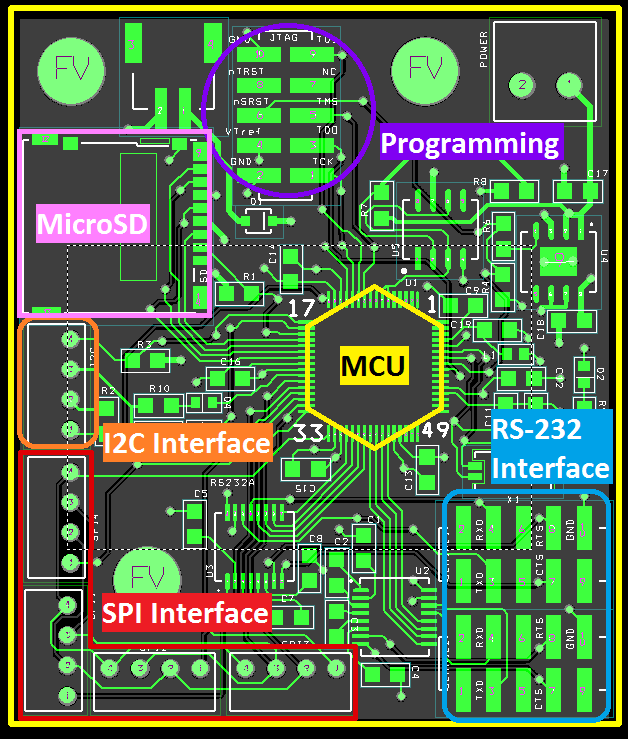Hierarchy
 The hierarchy is a distributed system, i.e. slave boards to interface with the actual power lines, convert the data, and send it to a master. The master will control which lines are going to be measured, with what frequency, and synchronize the Slaves with the real time clock on the glider computers. All of the data can then be stored to the attached MicroSD card or transfered to the Glider computers.
The hierarchy is a distributed system, i.e. slave boards to interface with the actual power lines, convert the data, and send it to a master. The master will control which lines are going to be measured, with what frequency, and synchronize the Slaves with the real time clock on the glider computers. All of the data can then be stored to the attached MicroSD card or transfered to the Glider computers.
|
Master
 The Master starts first and is what initializes each module in the system. There are many things that need to be initialized before the system can begin measureing and recording data from the slaves.
The Master starts first and is what initializes each module in the system. There are many things that need to be initialized before the system can begin measureing and recording data from the slaves.
- File System on the MicroSD card
- Synchronizing the real time clocks to main time on the Glider computers (essential for time stamping data)
- Start the initialization codeing on any slaves that are connected.
As such the master needs interfaces to communicate to the SD card, glider computer, and the Slaves.
MicroSD Card Interface
The SD card is an SPI device that has 3.3V logic.
Since the Xmega256A3 microcontroller runs on 3.3V logic,
no level converters are needed, only four pins to interface with the card:
Slave Select, Master-In-Slave-Out, Master-Out-Slave-IN, and Slave Clock.
The connector we use also has a Card Detect pin.
We use this to switch between storing data on the card,
if it is there, or sending it to the Glider computers.
Glider Computer Interface
There are two Computers on the Glider that we can interface with, the Linux board and the Science computer.
We can pull the real time down to the master and transfer data that cannot be logged on the SD card using this interface.
They only have RS232 serial interfaces, which do not run with 3.3V logic levels.
RS232 logic uses Voltages of -3V to -12V as logic "1s" and 3V to 12V as logic "0s".
This logic conversion is easily done with a pair of Maxim chips that we have included on the board.
Slave Interface
For the Slaves we have two interfaces ready for use.
There are the four SPI lines: SS, MISO, MOSI, SCK, similar to the MicroSD card.
There is also a two wire I2C interface: Data, and Clock.
The two interfaces are so Data and commands between the Slaves and the Master can be separated.
I2C would be used for commands to the slaves and SPI to transfer Data between Master and Slaves.
|